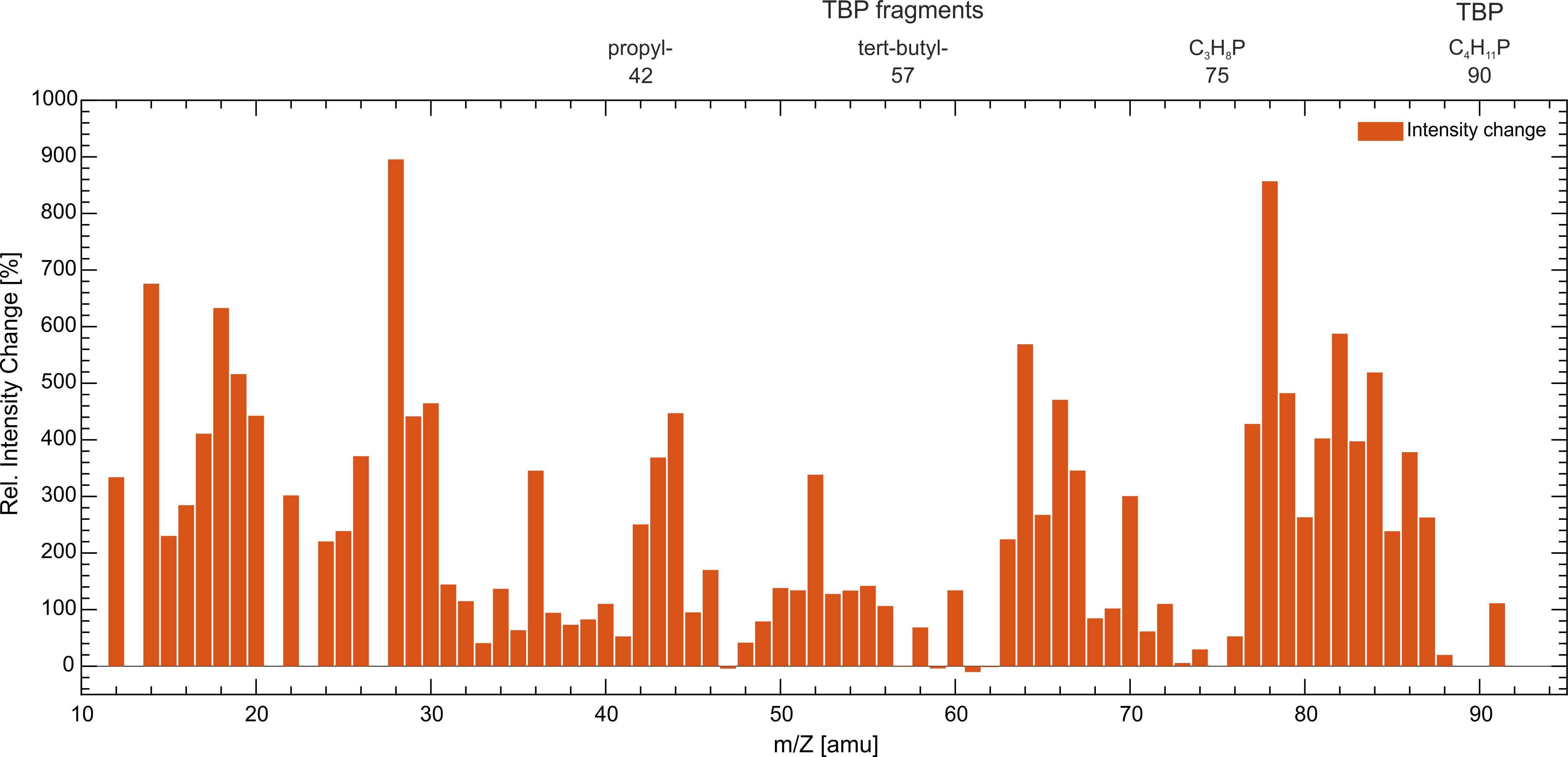III/V semiconductor precursor gases decomposed in in-situ TEM MOVPE investigations observed by Mass Spectrometry
- Abstract number
- 850
- Event
- European Microscopy Congress 2020
- DOI
- 10.22443/rms.emc2020.850
- Corresponding Email
- [email protected]
- Session
- PST.6 - In-situ and in-operando microscopy
- Authors
- Maximilian Widemann (1), David Krug (1), Felix Gruber (1), Andreas Beyer (1), Kerstin Volz (1)
- Affiliations
-
1. Materials Sciences Center and Faculty of Physics, Philipps University Marburg
- Keywords
III/V semiconductors, in-situ TEM, mass spectrometry, MOVPE
- Abstract text
III/V semiconductor devices are used for many technological applications, e.g. LEDs, lasers and solar cells. Metal organic vapor phase epitaxy (MOVPE) is a widely used fabrication process of these materials, where metal organic precursor gases are supplied to a heated substrate. A layer by layer growing crystal results from the thermal decomposition of the precursor gases and the adsorption on the crystalline substrate. Mass spectrometry analysis of the gas phase in the MOVPE reactor are able to give detailed insights into the decomposition of the precursor gases, and thus into the growth process [1]. since there are only limited possibilities for investigations, which can be done during the growth procedure, structural investigations of the samples are usually carried out post growth. Moreover, direct observations of the crystal growth in conventional MOVPE reactors are challenging. To achieve an improvement of the performance of fabricated materials in-situ studies of the growth process are very promising. In-situ (scanning) transmission electron microscopy ((S)TEM) allows to investigate dynamic processes, which occur during growth of III/V semiconductors. Gas environmental cell and heating holders enable to supply gases while heating the sample so that conditions comparable to those during the MOVPE process can be realized in any microscope [2] and semiconductor growth can be performed. However, the comparability of such a micro reactor with a conventional one needs to be proven. Of special interest are in this case the influence of the electron beam as well as the smaller dimension of the closed cell holder tip, which acts as MOVPE reactor, on the decomposition of the precursor gases.
To this end, a commercially available Protochips in-situ system, equipped with a quadrupole mass spectrometer, has been modified to investigate the processes occurring during semiconductor growth. In order to allow the usage of toxic and pyrophoric gases, like the precursor gases used in MOVPE growth, a gas mixing system, an appropriate gas monitoring system as well as a gas scrubbing system have been added to the setup [3]. A double CS-corrected JEOL JEM 2200FS operating at 200 kV was used for the TEM observations. Investigated precursor gases are tertiarybutylphosphine (TBP) and trimethylgallium (TMGa), which can be used for GaP growth at partial pressures between 10-1 and 10-3 hPa and a V/III ratio of around 10. Additionally, N2 is used as carrier gas at pressures in the range of 102 hPa. Temperatures at which efficient decomposition takes place are expected to be in the range of 400 °C to 500 °C.
The decomposition behavior of the precursor gases is observed in the micro meter scaled holder tip geometry inside of a TEM. Especially the thermal decomposition in dependence of the temperature which is realized in a volume of only thousands of cubic micrometers, and the irradiating electron beam interacting with the gas volume are investigated.
Comparing two mass spectra (MS) of a gas mixture of 99% nitrogen and 1% TBP with a total pressure of 400 hPa at different temperatures show the thermal influence on TBP decomposition. A decrease by 87 % of the intensity of the precursor molecule was revealed caused by a temperature increase fro room temperature to 1000 °C. This strong decrease demonstrates that, even in the small volume of the holder tip, precursor gases can be thermally decomposed by a high proportion. Furthermore, by comparing the MS normalized to the TBP peak at 90 amu an increase of the TBP fragments can be observed. Figure 1 shows the relative change of the intensities of the MS recorded at 1000 °C in comparison to the MS at room temperature. The experiment was performed without impinging electron beam to see only the temperature effect. We will demonstrate our results on the decomposition behavior of the precursor gases by comparing MS with different gas mixtures, temperatures and beam doses.Figure 1. Comparison between MS at room temperature and 1000 °C of 99% nitrogen and 1% TBP with a pressure of 400 hPa normalized to 90 amu. The Date show the intensity change caused by the increased temperature.
- References
[1] P. W. Lee, et al., Journal of Crystal Growth 85.1-2 (1987), pp. 165-174.
[2] L. F. Allard, et al., Microscopy and Microanalysis 18.4 (2012), pp. 656-666.
[3] R. Straubinger, et al., Microscopy and Microanalysis 23.4 (2017), pp. 751-757.

